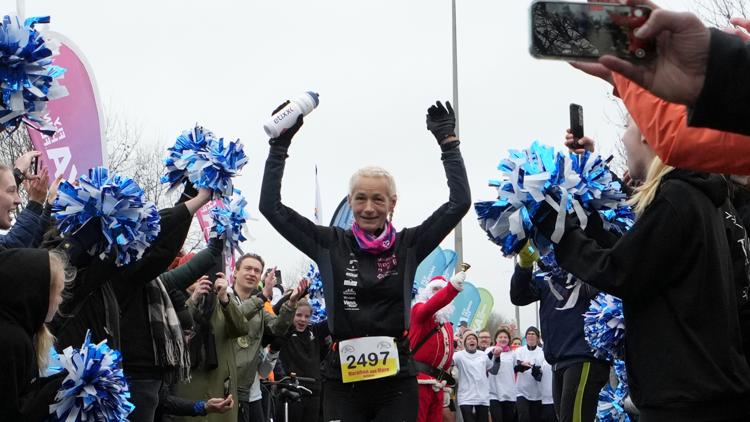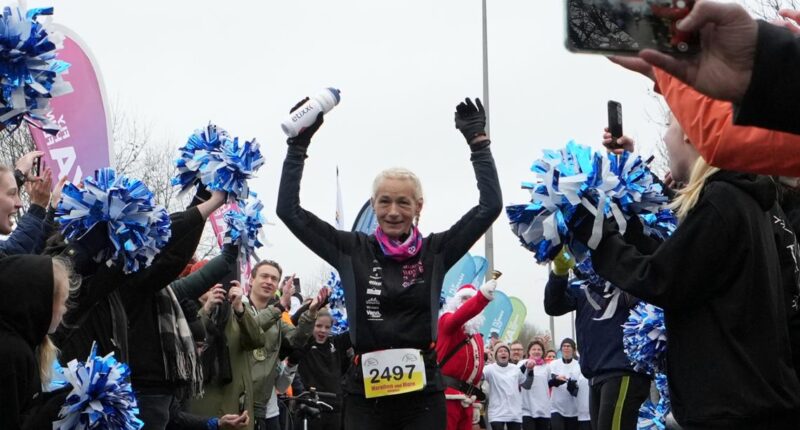
At 55 years old, Hilde Dosogne achieved an incredible milestone by running at least 15,444 kilometers in just one year. Not only that, but she also managed to raise an impressive 60,000 euros for breast cancer research.
In the city of GHENT, Belgium, Dosogne completed her final marathon on December 31, 2024, marking an end to her exceptional journey. She aimed to set a new world record as the first woman to run a marathon every single day throughout the entire year.
Despite the physical and mental challenges she faced, Dosogne showed no signs of slowing down as she crossed the finish line amidst a backdrop of cold, gray weather. Her fellow runners cheered her on, recognizing the remarkable achievement she had accomplished.
“I’m glad it’s over,” she said after crossing the line on the last day, leaving the last crash of many behind her when she collided with a spectator during her final run.
On top of the reward for her perseverance in running at least 15,444 kilometers in a single year, the 55-year-old also raised some 60,000 euros ($62,438) in funds for breast cancer research.
Now comes the filing of GPS data, photo and video evidence and independent witness reports she had to collect daily to meet the requirements of the Guinness World Records organization. If approved, the record should be officially hers in about three months.
The 55-year-old would join Hugo Farias, the Brazilian who holds the male record of 366 days, which he achieved in São Paulo, Brazil, on Aug. 28, 2023.
In the female category, Dosogne would be in a league all her own, since the current record by Erchana Murray-Bartlett of Australia stands at 150 days since Jan. 16, 2023.
One thing is sure: she doesn’t want her feat to become a shining example of healthy living — more one of personal persistence, as she had to fight off the flu, COVID-19, a dozen-plus crashes, blisters and even bursitis. Overall though, the brain took the toughest beating.
“The mental strain is harder than the physical. Of course, physically, everything has to be okay. Otherwise, you can’t run for four hours every day. But it was more mental to be there at the start-line every day,” she told The Associated Press.
Dosogne was able to do the majority of her marathons on a flat loop around a stretch of water, just outside the university town of Ghent, where a strong headwind could be her toughest competitor.
Even there, she said, she would not take any statistical risks and instead of the 42.195 kilometers (26.2 miles) a day, she made sure her run stood at 42.5 km — just for safe measure with the Guinness administrators.
Dosogne wishes she could have stretched her days the same way.
As a bio-engineer at a chemical firm, she starts especially early so she could squeeze in a marathon every afternoon. And because she could not run at top speed every single day, she stuck to an easy 10 kph (6.2 mph), which also allowed friends and witnesses to run along.
The only time when her daughter Lucie felt she might not make it was the day she crashed after 27 kilometers, had to be taken to the emergency ward with a dislocated finger, and spent far too much time there to be allowed to finish the marathon by the regulation. The solution? “She started from scratch again,” said Lucie.
“It’s still a little bit crooked,” said Dosogne.

















